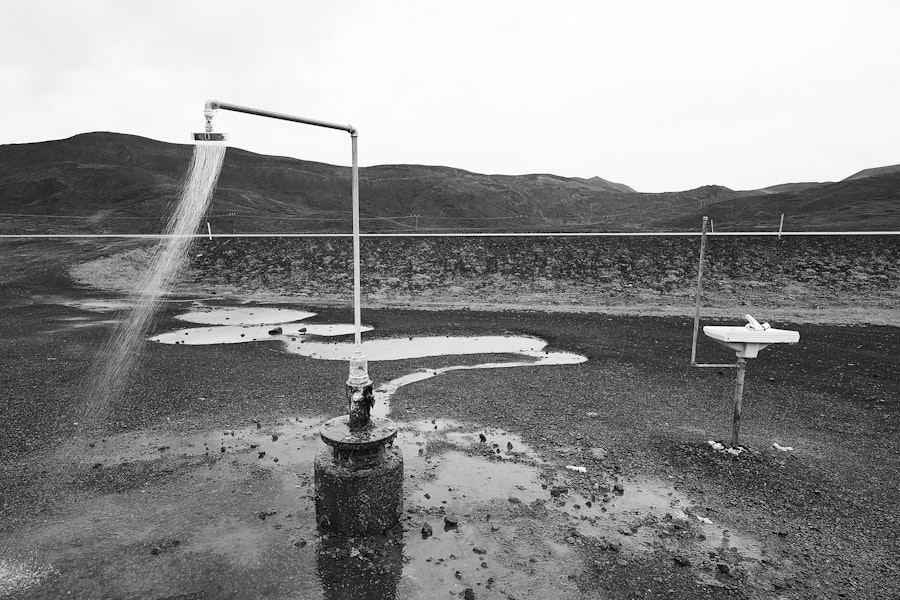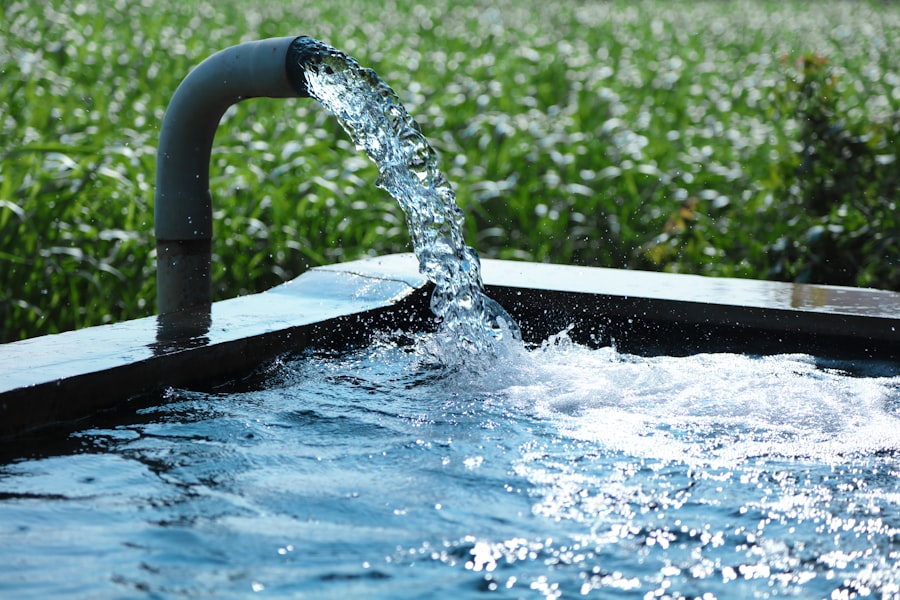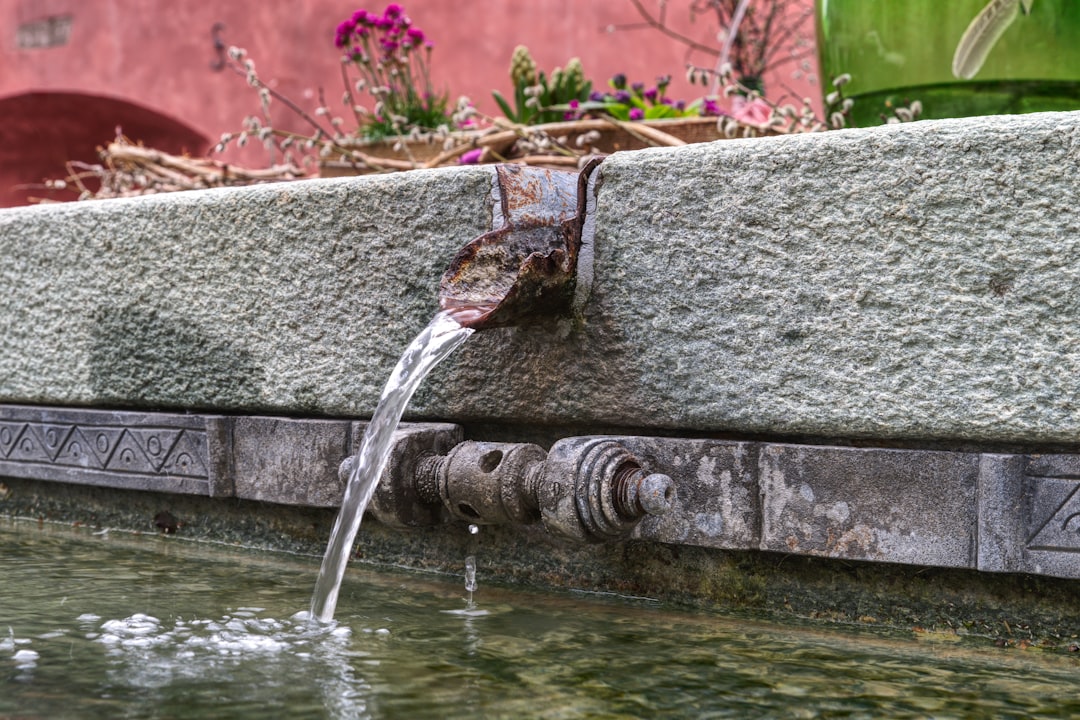Non Revenue Water (NRW) is a critical concept in the water management sector that refers to water that has been produced but is not billed to customers. This can occur due to various reasons, including leaks, theft, or metering inaccuracies. As you delve into the intricacies of NRW, it becomes evident that addressing this issue is essential for both economic and environmental sustainability.
By understanding the factors contributing to NRW, you can better appreciate the importance of effective water management strategies. The implications of high levels of NRW are significant. Not only does it represent a loss of potential revenue for water utilities, but it also indicates inefficiencies in the water distribution system.
As you explore this topic further, consider how NRW can strain resources, lead to increased operational costs, and ultimately affect the quality of service provided to customers. By grasping the full scope of NRW, you can begin to identify actionable steps to mitigate its impact. Check out this video on how investors making money from water.
Key Takeaways
- Non Revenue Water (NRW) refers to water that is lost before it reaches the customer or is not billed for, and understanding its sources is crucial for water utilities.
- Identifying leakage points in the water distribution system is essential for reducing NRW and can be done through regular inspections and monitoring.
- Implementing pressure management techniques can help reduce leakage and pipe bursts, ultimately leading to lower NRW levels.
- Utilizing advanced leak detection technologies such as acoustic sensors and satellite imagery can help water utilities pinpoint and address leaks more efficiently.
- Regular maintenance and repairs of infrastructure, along with proactive leak detection, are key to minimizing NRW and ensuring efficient water distribution.
Identifying Leakage Points
Identifying leakage points within a water distribution system is a fundamental step in reducing NRW. You may find that leaks can occur in various locations, including pipes, joints, and service connections. The challenge lies in pinpointing these leaks before they escalate into larger issues.
Utilizing techniques such as acoustic monitoring and visual inspections can help you detect these hidden problems early on. Moreover, understanding the age and material of your infrastructure can provide valuable insights into where leaks are most likely to occur. Older pipes made from certain materials may be more susceptible to corrosion and breakage.
By conducting regular assessments and employing advanced technologies, you can systematically identify and address leakage points, ultimately leading to a more efficient water distribution system.
Implementing Pressure Management

Pressure management is another vital strategy in combating NRW. By regulating the pressure within the water distribution system, you can significantly reduce the likelihood of leaks and bursts. High pressure can exacerbate existing weaknesses in pipes, leading to increased water loss.
As you consider implementing pressure management techniques, think about how adjusting pressure levels can create a more stable environment for your infrastructure. In addition to reducing leaks, effective pressure management can enhance overall system performance. You may find that maintaining optimal pressure levels not only minimizes water loss but also improves service delivery to customers.
By investing in pressure management solutions, you can create a more resilient water distribution network that stands up to the challenges posed by aging infrastructure and fluctuating demand.
Utilizing Advanced Leak Detection Technologies
| Technology | Accuracy | Cost | Portability |
|---|---|---|---|
| Acoustic Leak Detection | High | Medium | Low |
| Infrared Thermography | Medium | High | Low |
| Tracer Gas Leak Detection | High | High | Medium |
The advent of advanced leak detection technologies has revolutionized the way water utilities approach NRW. You may be familiar with traditional methods such as visual inspections and manual monitoring; however, modern technologies offer far more precision and efficiency. Tools like smart sensors, satellite imaging, and acoustic leak detection systems allow for real-time monitoring of water systems, enabling you to identify leaks with remarkable accuracy.
By integrating these technologies into your operations, you can significantly enhance your ability to detect and address leaks promptly. This proactive approach not only reduces water loss but also minimizes the disruption caused by emergency repairs. As you explore these advanced solutions, consider how they can be tailored to fit your specific needs and challenges, ultimately leading to a more sustainable water management strategy.
Regular Maintenance and Repairs
Regular maintenance and repairs are essential components of an effective strategy for reducing NRW. You may find that a proactive maintenance schedule can help prevent minor issues from escalating into major problems. By routinely inspecting and servicing your infrastructure, you can identify potential weaknesses before they lead to leaks or breaks.
In addition to routine maintenance, timely repairs are crucial in minimizing water loss. When leaks are detected, addressing them swiftly can prevent further damage and reduce the volume of non-revenue water. As you develop your maintenance plan, consider incorporating both preventive measures and responsive strategies to ensure that your water distribution system remains in optimal condition.
Engaging the Community

Engaging the community is an often-overlooked aspect of managing NRW effectively. You may find that raising awareness about water conservation and the importance of reporting leaks can foster a sense of responsibility among residents. By involving the community in your efforts, you can create a collaborative approach to reducing water loss.
Consider organizing workshops or informational campaigns that educate residents about the impact of NRW and how they can contribute to solutions. Encouraging community members to report leaks or suspicious activities can significantly enhance your ability to identify and address issues promptly. By fostering a culture of collaboration and accountability, you can create a more resilient water management system that benefits everyone.
Investing in Infrastructure Upgrades
Investing in infrastructure upgrades is a long-term strategy that can yield significant benefits in reducing NRW. As you assess your current systems, consider whether aging pipes or outdated technology may be contributing to water loss. Upgrading infrastructure not only enhances efficiency but also improves service reliability for customers.
When planning for upgrades, it’s essential to prioritize areas with the highest levels of NRW. By targeting investments where they will have the most significant impact, you can maximize your return on investment while simultaneously addressing critical issues within your water distribution network. As you embark on this journey, keep in mind that modernizing infrastructure is not just about replacing old components; it’s also about adopting innovative solutions that promote sustainability and resilience.
Implementing Water Loss Control Programs
Implementing comprehensive water loss control programs is crucial for effectively managing NRW. These programs should encompass a range of strategies aimed at identifying, monitoring, and mitigating water loss throughout the distribution system. You may find that establishing clear goals and performance metrics can help guide your efforts and ensure accountability.
As part of your water loss control program, consider conducting regular audits to assess the effectiveness of your strategies. By analyzing data on water production and consumption, you can identify trends and areas for improvement. This ongoing evaluation will enable you to adapt your approach as needed and ensure that your efforts remain aligned with best practices in water management.
Training and Empowering Staff
Training and empowering staff is an essential element in the fight against NRW. You may recognize that well-trained personnel are better equipped to identify issues within the system and implement effective solutions. Investing in training programs that focus on leak detection, maintenance practices, and customer engagement can significantly enhance your team’s capabilities.
Moreover, fostering a culture of empowerment among staff encourages them to take ownership of their roles in managing NRW. When employees feel valued and informed, they are more likely to contribute innovative ideas and solutions that benefit the organization as a whole. As you prioritize staff development, consider how their expertise can drive meaningful change within your water management practices.
Monitoring and Measuring Progress
Monitoring and measuring progress is vital for understanding the effectiveness of your NRW reduction strategies. You may find that establishing key performance indicators (KPIs) allows you to track improvements over time and make data-driven decisions. Regularly reviewing these metrics will enable you to assess whether your initiatives are yielding the desired results.
In addition to quantitative measures, qualitative feedback from staff and community members can provide valuable insights into areas for improvement. By combining both types of data, you can develop a comprehensive understanding of your progress and identify opportunities for further enhancement. This ongoing evaluation process will ensure that your efforts remain focused on achieving meaningful reductions in non-revenue water.
Utilizing Data Analytics for Decision Making
Utilizing data analytics for decision-making is an increasingly important aspect of effective water management. You may recognize that harnessing data from various sources—such as consumption patterns, leak detection technologies, and maintenance records—can provide valuable insights into your operations. By leveraging advanced analytics tools, you can uncover trends and correlations that inform strategic decisions.
As you integrate data analytics into your processes, consider how predictive modeling can help anticipate future challenges related to NRW. By analyzing historical data alongside current conditions, you can proactively address potential issues before they escalate into significant problems. This forward-thinking approach not only enhances operational efficiency but also positions your organization as a leader in sustainable water management practices.
In conclusion, addressing Non Revenue Water requires a multifaceted approach that encompasses understanding its causes, implementing effective strategies, engaging stakeholders, and leveraging technology. By taking proactive steps in each of these areas, you can significantly reduce NRW while enhancing service delivery and promoting sustainability within your community.
One effective approach to reducing non-revenue water is through the implementation of advanced metering infrastructure, which enhances the accuracy of water usage data and helps identify leaks more efficiently. For further insights on water management strategies, you can refer to a related article on this topic at howwealthgrows.
com/’>How Wealth Grows. This resource provides valuable information on various methods to optimize water resources and minimize losses.
WATCH THIS! Why Wall Street Is Exploding Your Water Bill
FAQs
What is non revenue water (NRW)?
Non revenue water (NRW) refers to water that is lost before it reaches the customer or is not billed for, including water lost through leaks, theft, or inaccurate metering.
Why is reducing non revenue water important?
Reducing non revenue water is important because it can lead to financial losses for water utilities, as well as water scarcity in areas where water is already a scarce resource. It also helps to improve the overall efficiency and sustainability of water supply systems.
What are some common non revenue water reduction strategies?
Common non revenue water reduction strategies include leak detection and repair, metering and billing system improvements, pressure management, customer engagement and education, and infrastructure upgrades.
How can leak detection and repair help reduce non revenue water?
Leak detection and repair involves identifying and fixing leaks in the water distribution system. This can help reduce non revenue water by preventing water loss from leaks and improving the overall efficiency of the system.
What role does pressure management play in reducing non revenue water?
Pressure management involves controlling the pressure in the water distribution system to minimize leaks and bursts. By reducing excessive pressure, water utilities can decrease the likelihood of leaks and conserve water.
How can customer engagement and education contribute to non revenue water reduction?
Customer engagement and education initiatives can help raise awareness about water conservation and the importance of reporting leaks or unauthorized water use. This can lead to reduced water waste and improved overall water management.
What are the benefits of implementing non revenue water reduction strategies?
Implementing non revenue water reduction strategies can lead to financial savings for water utilities, improved water resource management, reduced environmental impact, and enhanced service reliability for customers.
